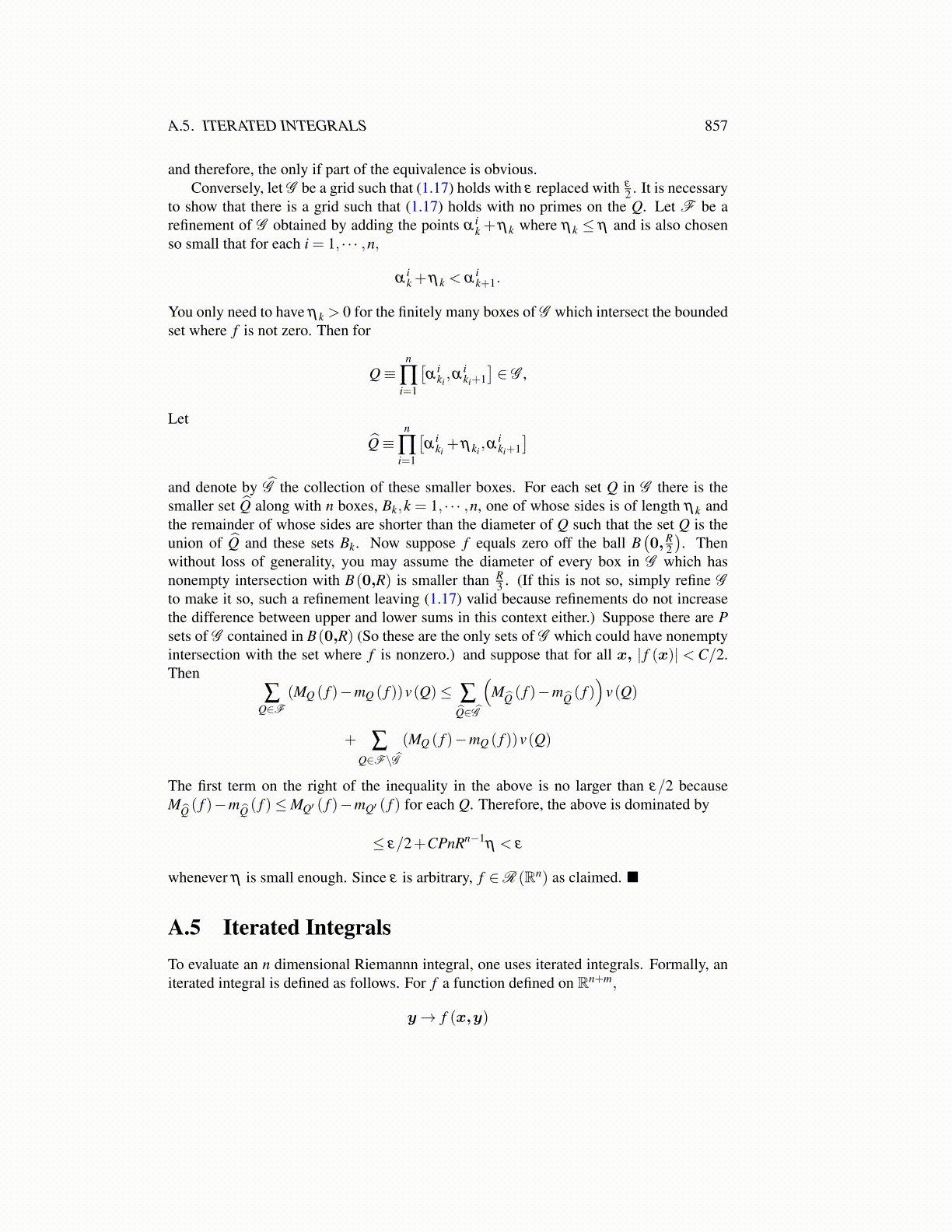
A.5. ITERATED INTEGRALS 857
and therefore, the only if part of the equivalence is obvious.Conversely, let G be a grid such that (1.17) holds with ε replaced with ε
2 . It is necessaryto show that there is a grid such that (1.17) holds with no primes on the Q. Let F be arefinement of G obtained by adding the points α i
k +ηk where ηk ≤ η and is also chosenso small that for each i = 1, · · · ,n,
αik +ηk < α
ik+1.
You only need to have ηk > 0 for the finitely many boxes of G which intersect the boundedset where f is not zero. Then for
Q≡n
∏i=1
[α
iki,α i
ki+1]∈ G ,
Let
Q̂≡n
∏i=1
[α
iki+ηki
,α iki+1]
and denote by Ĝ the collection of these smaller boxes. For each set Q in G there is thesmaller set Q̂ along with n boxes, Bk,k = 1, · · · ,n, one of whose sides is of length ηk andthe remainder of whose sides are shorter than the diameter of Q such that the set Q is theunion of Q̂ and these sets Bk. Now suppose f equals zero off the ball B
(0,R
2
). Then
without loss of generality, you may assume the diameter of every box in G which hasnonempty intersection with B(0,R) is smaller than R
3 . (If this is not so, simply refine Gto make it so, such a refinement leaving (1.17) valid because refinements do not increasethe difference between upper and lower sums in this context either.) Suppose there are Psets of G contained in B(0,R) (So these are the only sets of G which could have nonemptyintersection with the set where f is nonzero.) and suppose that for all x, | f (x)| < C/2.Then
∑Q∈F
(MQ ( f )−mQ ( f ))v(Q)≤ ∑Q̂∈Ĝ
(MQ̂ ( f )−mQ̂ ( f )
)v(Q)
+ ∑Q∈F\Ĝ
(MQ ( f )−mQ ( f ))v(Q)
The first term on the right of the inequality in the above is no larger than ε/2 becauseMQ̂ ( f )−mQ̂ ( f )≤MQ′ ( f )−mQ′ ( f ) for each Q. Therefore, the above is dominated by
≤ ε/2+CPnRn−1η < ε
whenever η is small enough. Since ε is arbitrary, f ∈R (Rn) as claimed. ■
A.5 Iterated IntegralsTo evaluate an n dimensional Riemannn integral, one uses iterated integrals. Formally, aniterated integral is defined as follows. For f a function defined on Rn+m,
y→ f (x,y)